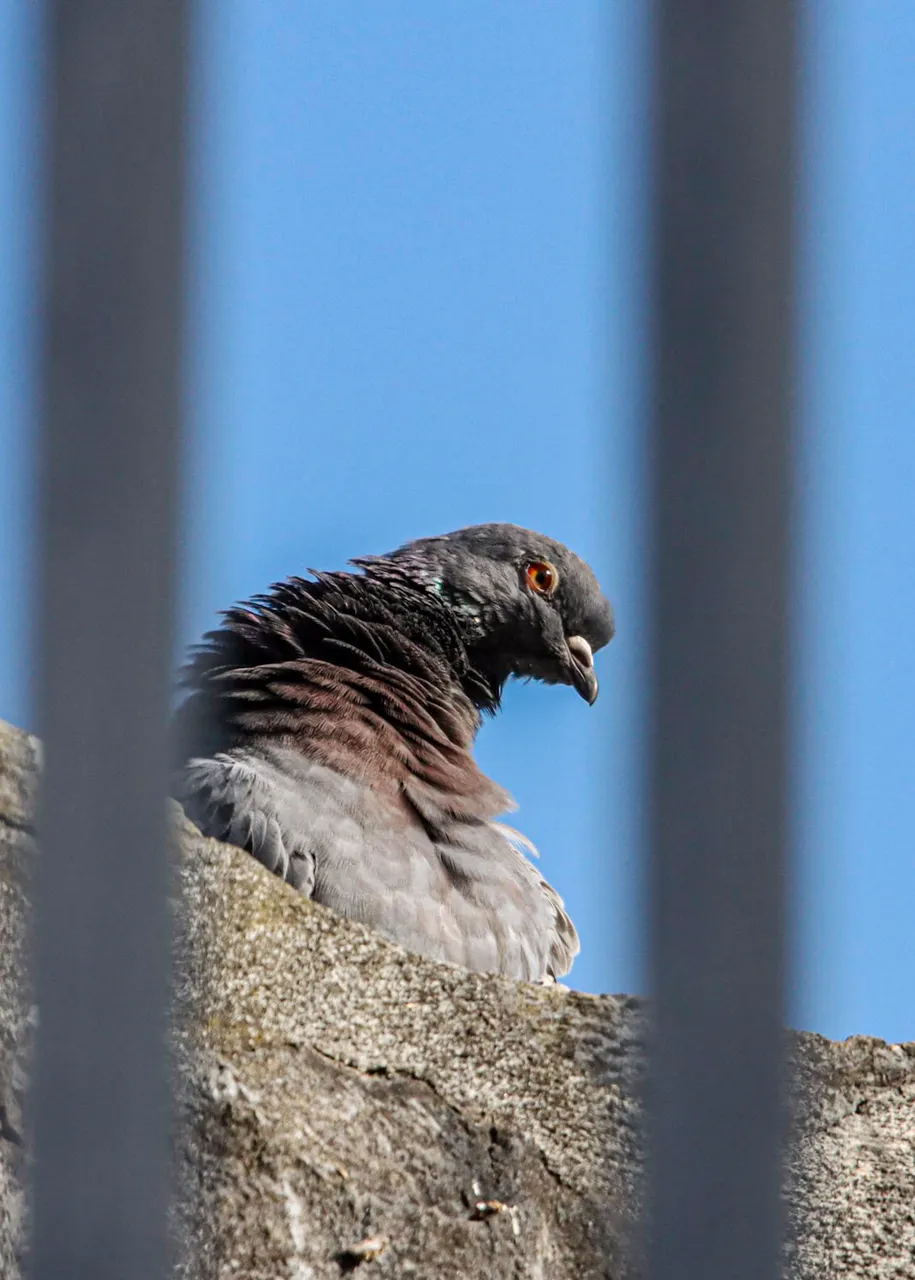Good evening everyone..
This week I got pretty good pictures of birds that surround me.. I went on few trips with my family so I took few shots of pidgeons on the top of the old Castle..

This is The rock dove is a wild ancestor of all domestic and feral pigeons, inhabiting coasts, cliffs, and caves. Pairs nest in rock crevices, often mating for life. They are known for their ability to fly very long distances to return to their homes, navigating using the sun's position and the earth's magnetic fields. Thanks to this ability, pigeons were used as messengers, particularly during World Wars I and II. source

They have amazing colors around their neck

Eurasian collared dove

This plump, pretty eurasian dove with a square-tipped tail is known for bobbing its head and flicking its tail while walking. Though nice to look at, many people are not pleased at the sight of a eurasian collared dove walking along. In North America they are considered an invasive species, and one that carries a disease-creating parasite that can spread to native dove populations through birdbaths, feeders, or even through hawks preying on them. source

Common starlings prefer urban or suburban areas where artificial structures and trees provide adequate nesting and roosting sites. Reedbeds are also favoured for roosting and the birds commonly feed in grassy areas such as farmland, grazing pastures, playing fields, golf courses and airfields where short grass makes foraging easy. They occasionally inhabit open forests and woodlands and are sometimes found in shrubby areas such as Australian heathland.source

Just as its name implies, the little house sparrow socializes with humans more than any other bird species. Able to adapt and thrive in almost any habitat, excluding the extremes such as deserts and mountain peaks, this species was once restricted only to North Africa and Eurasia but now is found across the globe. Unfortunately, this opportunistic eater is not completely harmless—it can cause considerable damage to crops.source

Western jackdaws are voluble birds. The main call, frequently given in flight, is a metallic and squeaky chyak-chyak or kak-kak. This is a contact or greeting call. A feeding call made by adults to call young, or males when offering food to their mates, has been transcribed as kiaw or kyow. Females in return give a more drawn out version when begging for food from males, written as kyaay, tchaayk or giaaaa. Perched birds often chatter together, and before settling for the night, large roosting flocks make a cackling noise. Western jackdaws also have a hoarse, drawn-out alarm call, arrrrr or kaaaarr, used when warning of predators or when mobbing them. Nestlings begin making a soft cheep at about a week of age. As they grow, their voice becomes louder until their call is a penetrating screech around day 18. After this, the voice deepens and softens. From day 25, the young cease calling and become silent if they hear an unfamiliar noise. The European jackdaw can be trained to imitate human speech. source

Globally, the little egret is not listed as a threatened species and has in fact expanded its range over the last few decades. The International Union for Conservation of Nature states that their wide distribution and large total population means that they are a species that cause them "least concern".
 source
source
Little egrets are sociable birds and are often seen in small flocks. Nevertheless, individual birds do not tolerate others coming too close to their chosen feeding site, though this depends on the abundance of prey. They use a variety of methods to procure their food. They make use of opportunities provided by cormorants disturbing fish or humans attracting fish by throwing bread into water

Although primarily found in woods, the common wood pigeon is a large and bulky pigeon that is often seen in towns and cities. Those who inhabit urban areas are quite tame, approachable, and comfortable around humans. This pigeon is a popular game bird, particularly during its migration journeys. Its distinctive call can be heard year-round, particularly at dawn. This ground-dwelling bird gathers in large flocks that feed together.

It perches well, and in its nuptial display walks along a horizontal branch with swelled neck, lowered wings, and fanned tail. During the display flight the bird climbs, the wings are smartly cracked like a whiplash, and the bird glides down on stiff wings. The common wood pigeon is gregarious, often forming very large flocks outside the breeding seasonsource

I hope you enjoyed in those pictures.. And description.. If you want to know more about them You have sources under each picture..
I wish you all good night.. Enjoy your day
